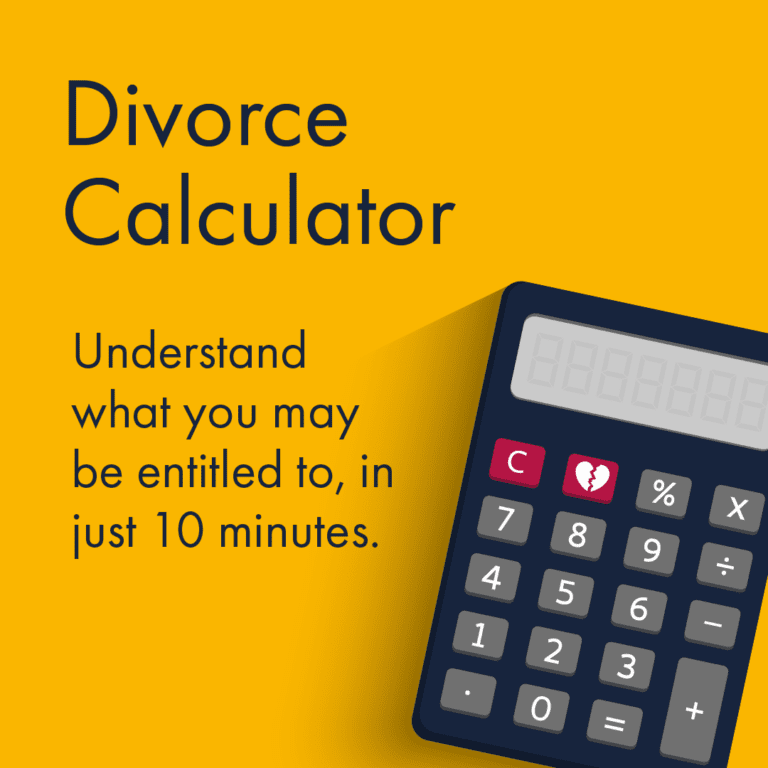The divorce process
Application
20-week reflection period
Conditional order
6-week waiting period
Final order
Average 9-12 months
If more than 12 months have elapsed between obtaining your conditional order and applying for your final order, you will have to submit a short statement to support your application, explaining the delay.
 Download the guide
Download the guide
A Guide to the Divorce Process
There are 3 key stages to the legal process of dissolving your marriage
Complete a divorce application:
Complete a divorce application on the Government website as either a sole applicant or together with your ex-spouse as joint applicants (Form D8) and submit the application either online or by post with the correct court fee – currently £612
Along with the form, you will need to supply your original marriage certificate or request an official copy.
Apply for a conditional order:
Once you have submitted Form D8, it will be checked by the court, and, once approved, you will be sent a notice that the application has been issued, a copy of the application and a case number. A copy of the application will be sent to your spouse along with a form for them to complete, the Acknowledgement of Service. They have 14 days to acknowledge the divorce.
Your 20-week cooling off period begins when your ex-spouse has submitted the Acknowledgement of Service. This is a good time for you and your ex-spouse to get your financial settlement agreed, and any child arrangements in place.
When the 20-weeks are complete, you can then apply for a conditional order – this order states the court sees no reason why you cannot divorce. To do this, you need to complete Form D84, Application for a conditional order or (judicial) separation order.
Apply for a final order:
6 weeks and 1 day after your conditional order is granted, you can apply for the final order. This legally dissolves your marriage. To do this, you need to fill in Form D36, notice of application for decree nisi to be made absolute or conditional order to be made final.
It is highly recommended you do not apply for a final order until you have a financial consent order approved by the court. You can take as much time as you need to apply for the final order. However, if more than 12 months elapses between your conditional order and applying for the final order, you will need to explain to the court that you have not reconciled in this time or had any children.
 Use the calculator
Use the calculator
What happens if my spouse refuses to return the Acknowledgement of Service?
When you fill in the divorce application (Form D8), you need to supply your ex-spouse’s name and address, along with some other details. If you do not have their current address, speak to your lawyer, as this can cause obstacles.
If your ex refuses to acknowledge the divorce, the application can be ordered to be served in person by a process server, who will physically deliver the divorce papers. Once you are sure that the application has been received, whether your ex-spouse acknowledges the service or not, you can proceed with the divorce. The court will ‘deem service’, which means they assume the application has been accepted, and the process can move forward.
 Download the Form E guide
Download the Form E guide
How long will the divorce take?
All in all, the process could take around six-eight months to complete, provided both parties do everything required at the earliest opportunity.
Delays by either side and disagreements over financial issues are common factors that slow progress, making the process take longer. If both parties cannot agree, or there are delays returning paperwork, then this can extend the time and increase costs.
One thing to be aware of when applying for the final order is that, once it is pronounced, you are no longer husband or wife. Should one of you die and the financial issues have not been resolved, then you may not be entitled to any widow’s benefits from pensions or life policies. It is always sensible therefore to have considered the financial issues, and had a written financial consent order approved, before you decide to apply for a final order.
Newsletter Sign Up
Sign up for advice on divorce and relationships from our lawyers, divorce coaches and relationship experts.
Privacy Policy